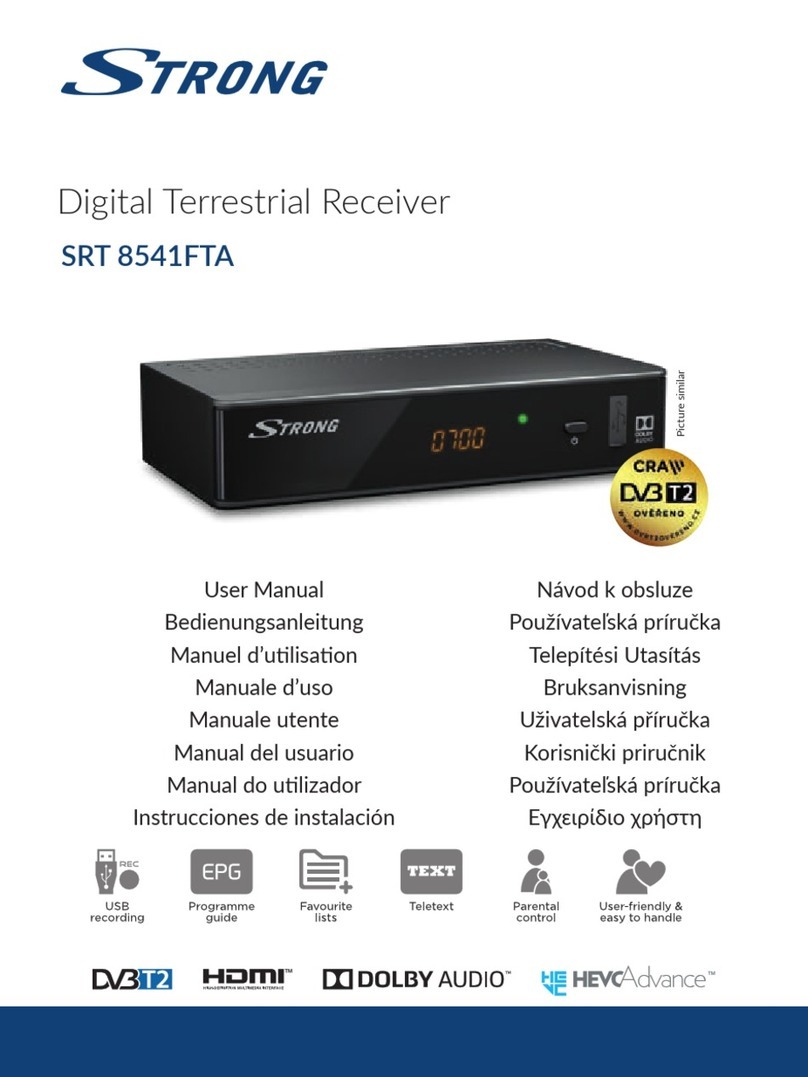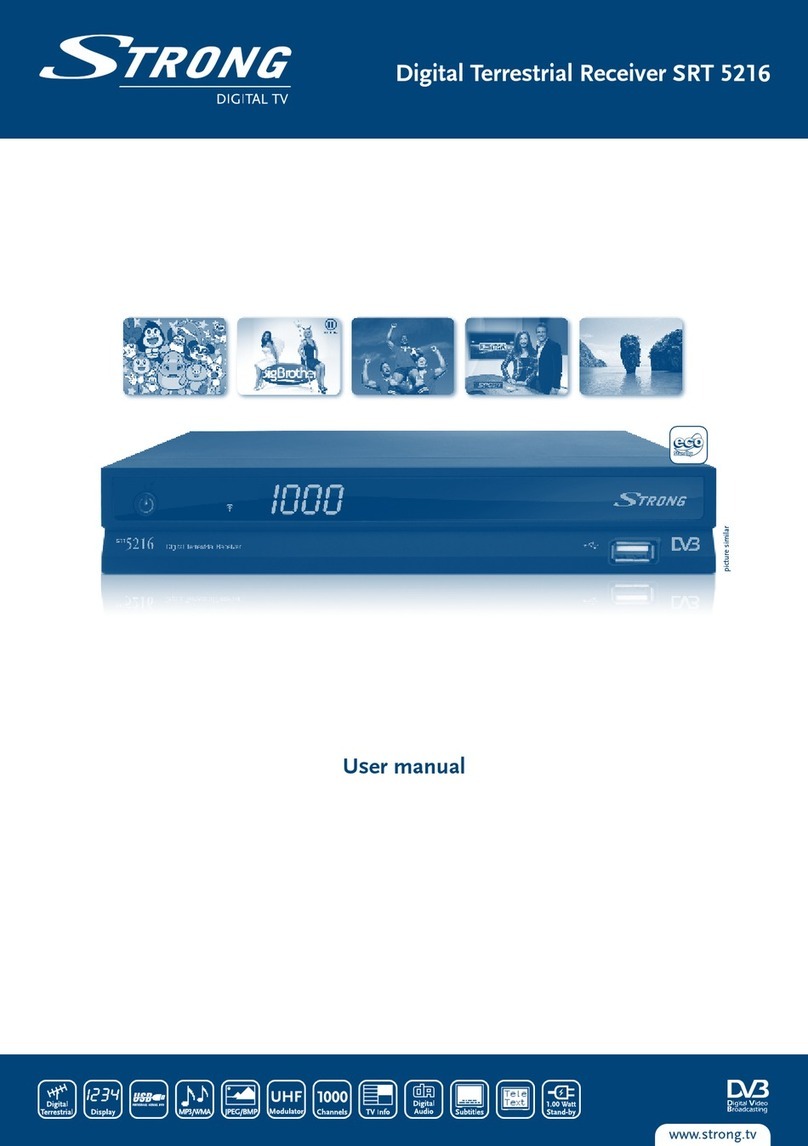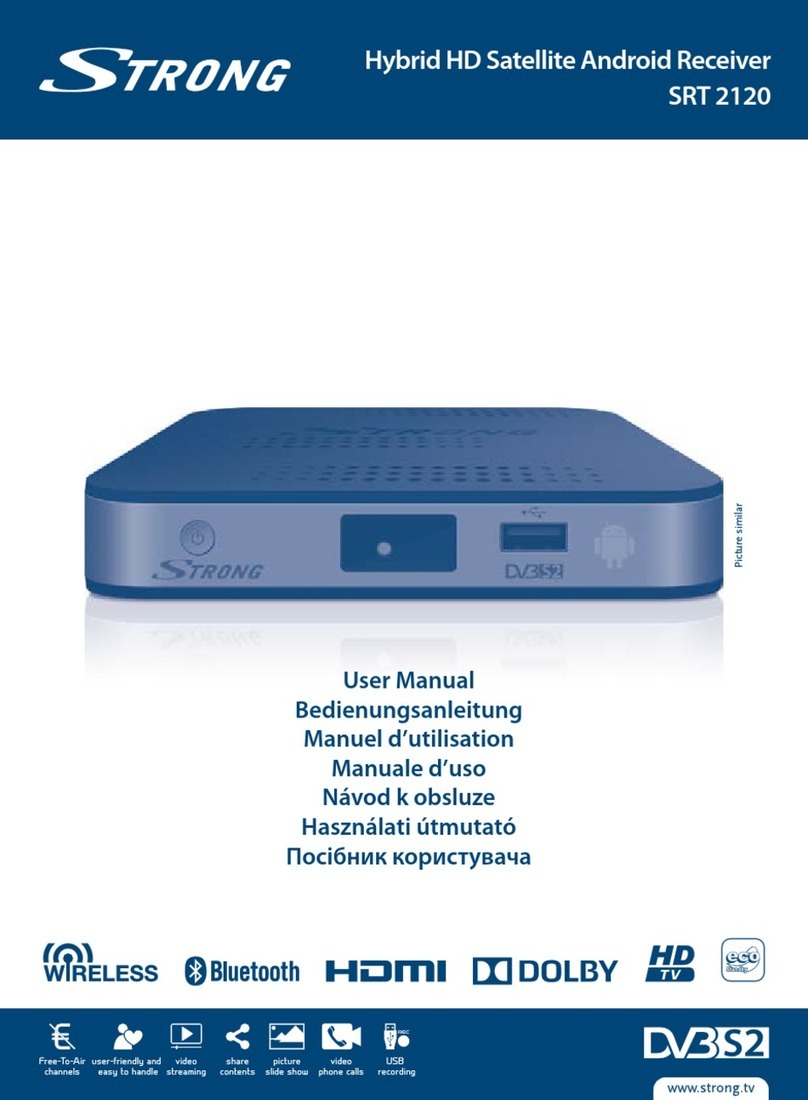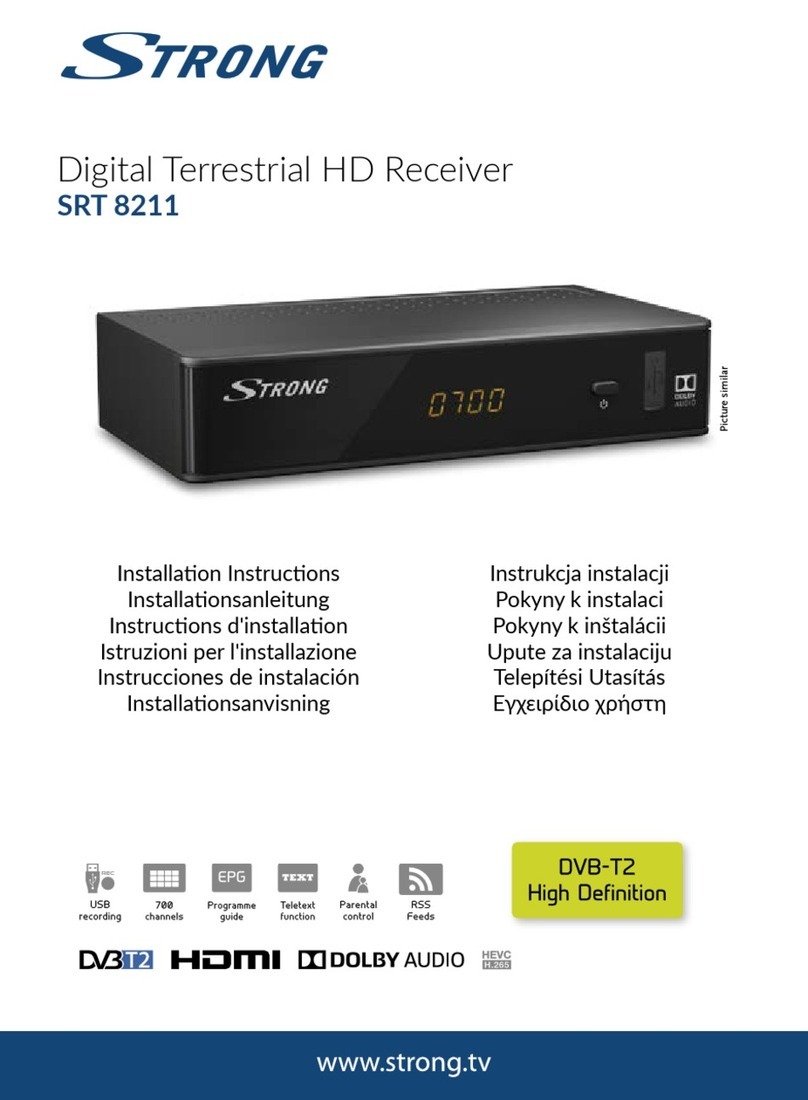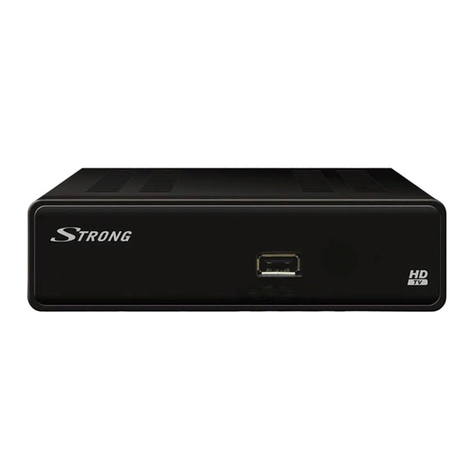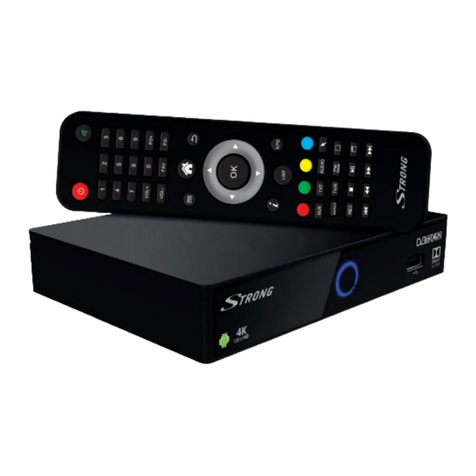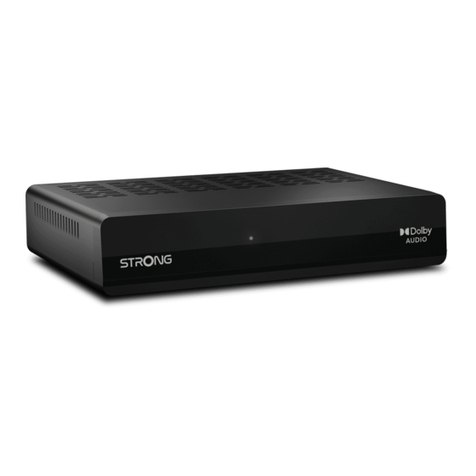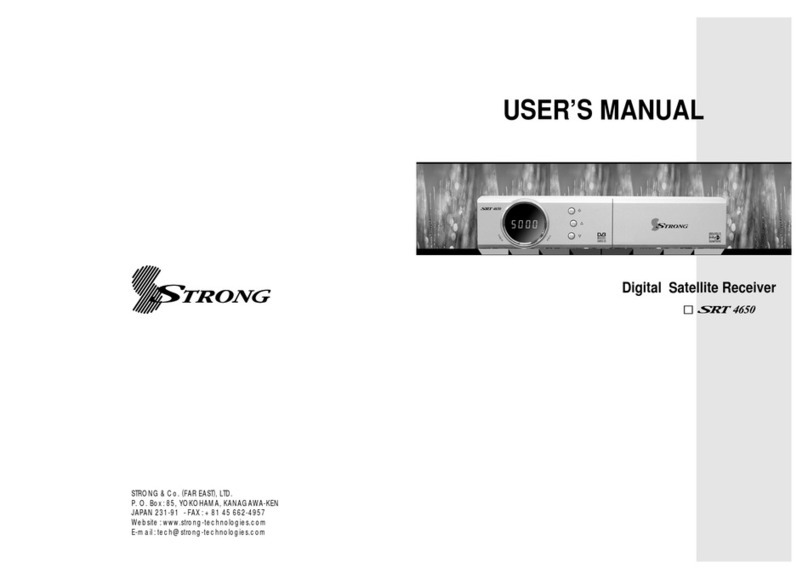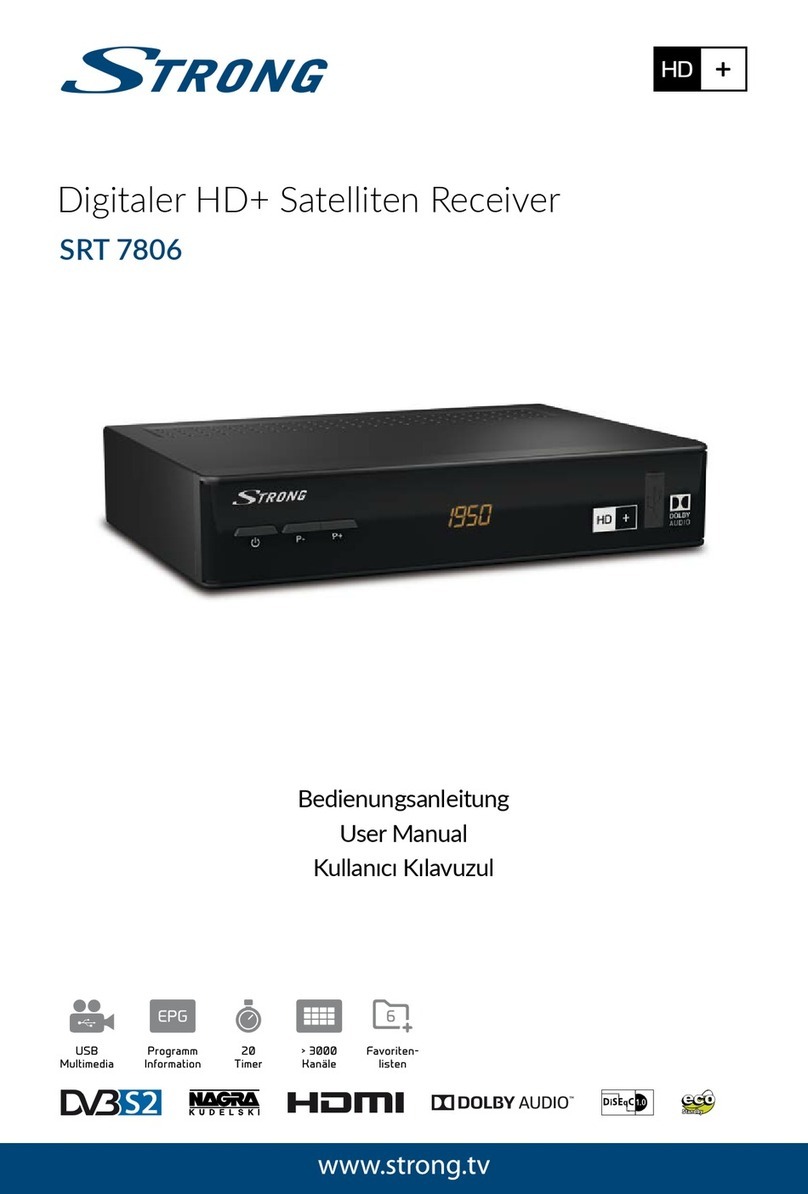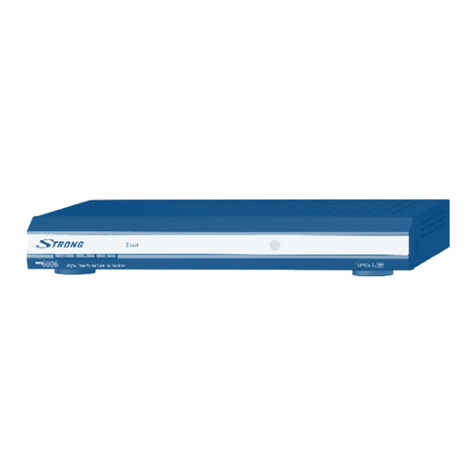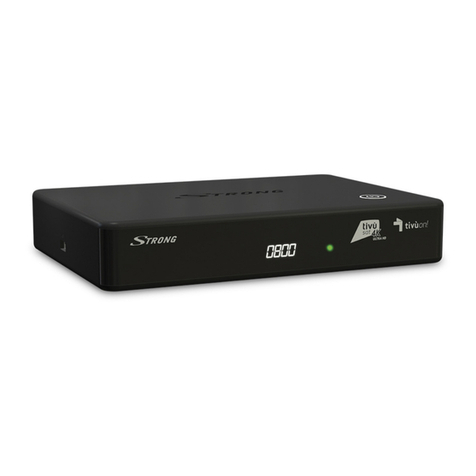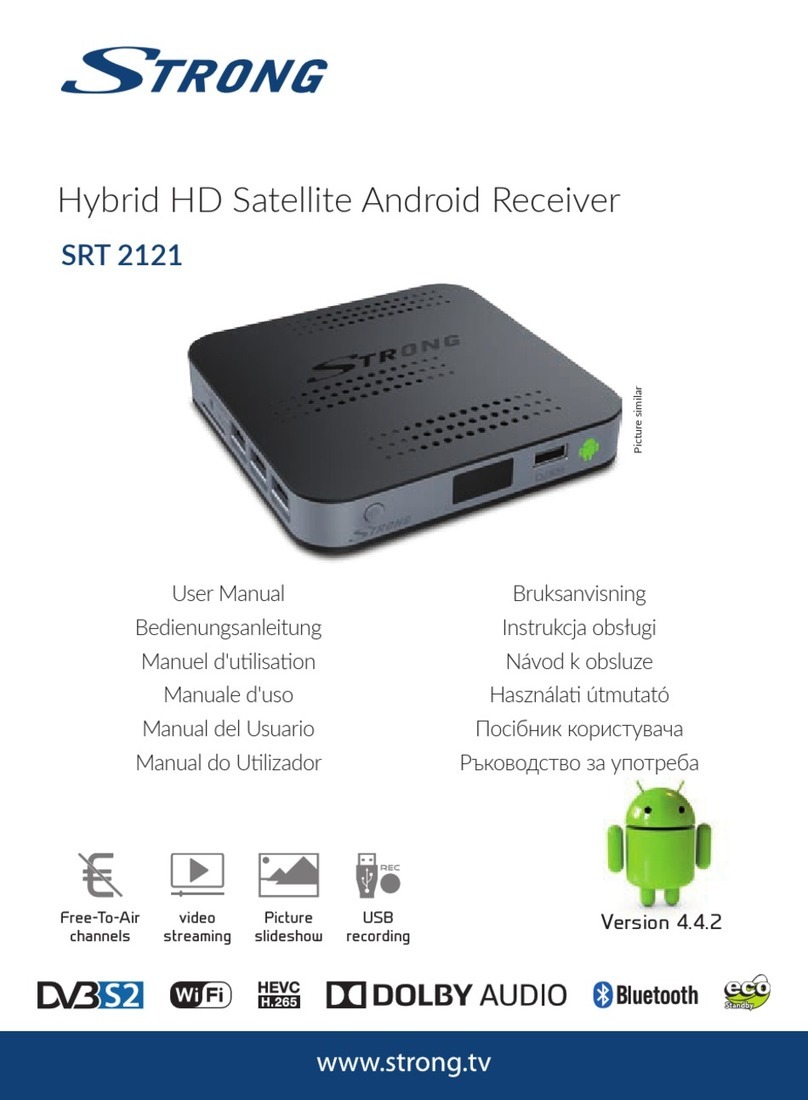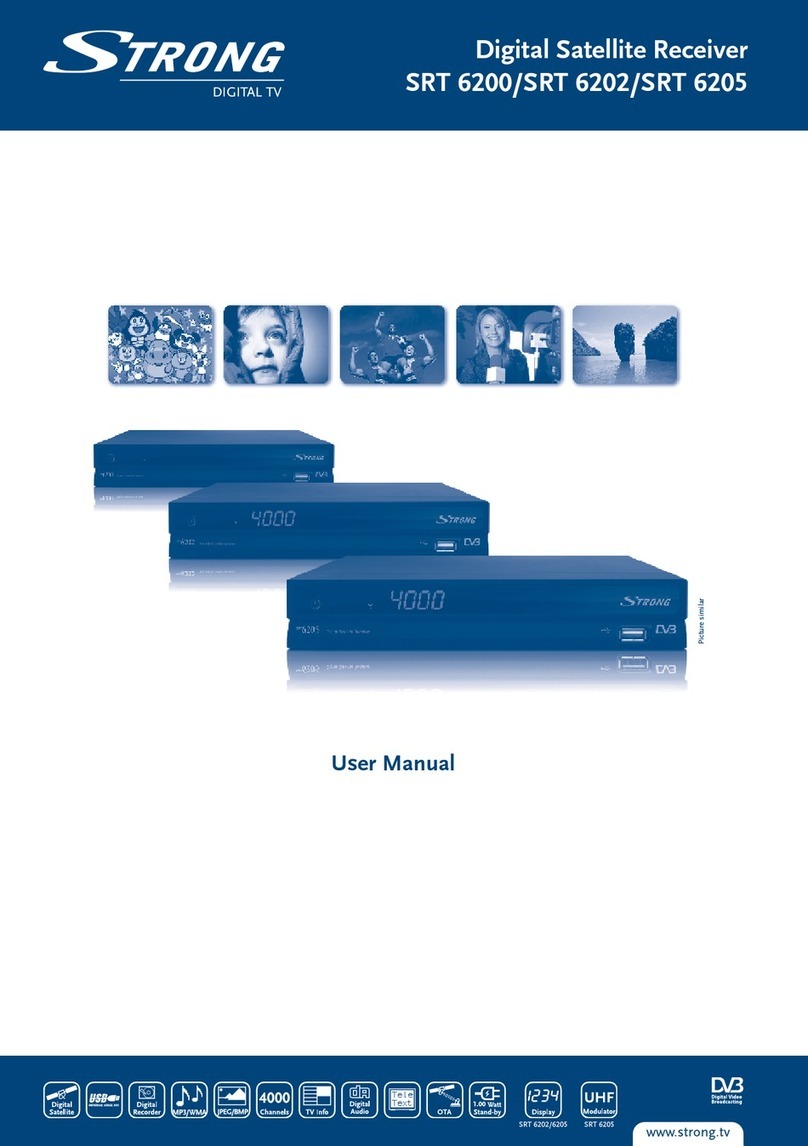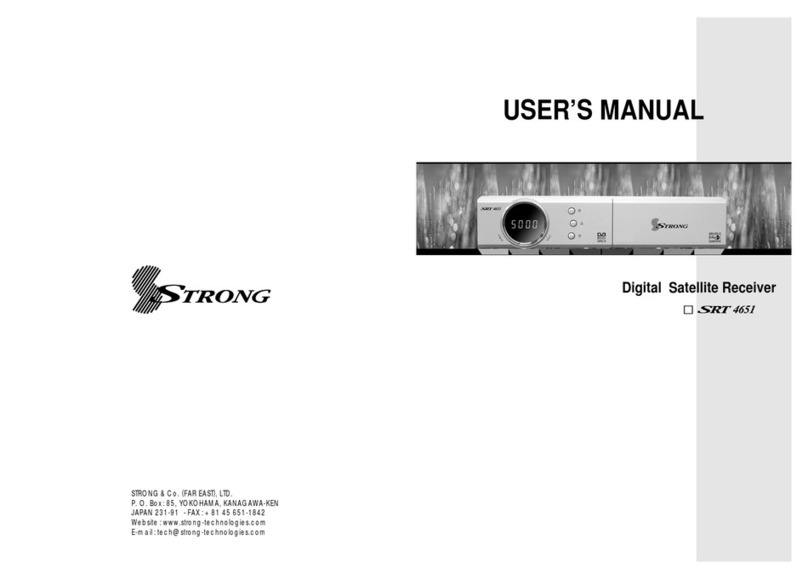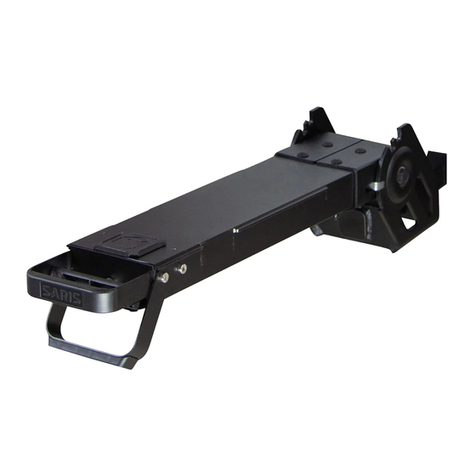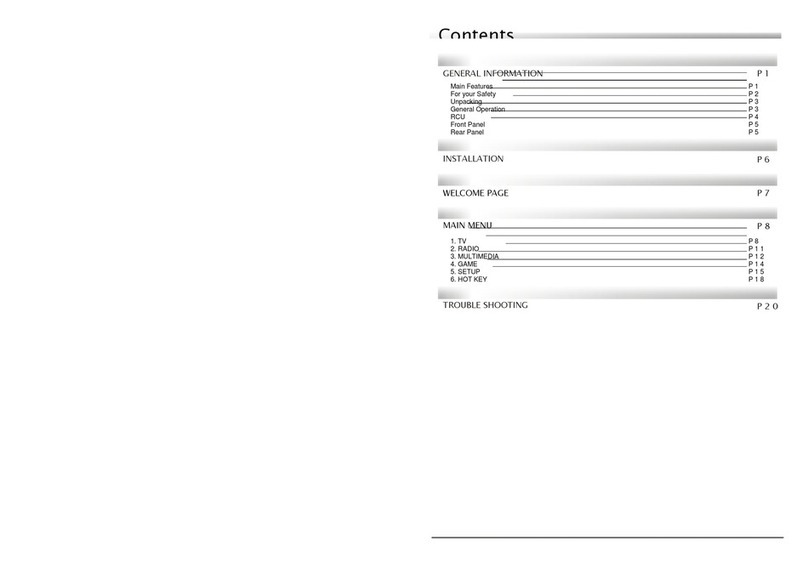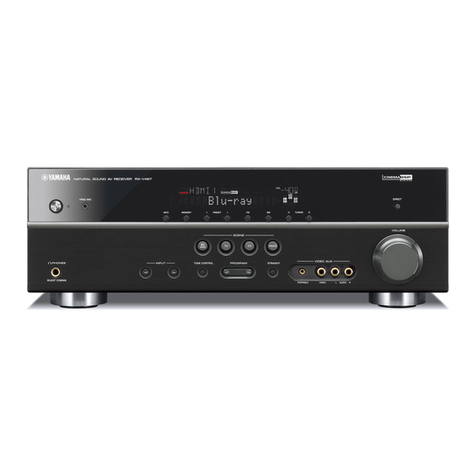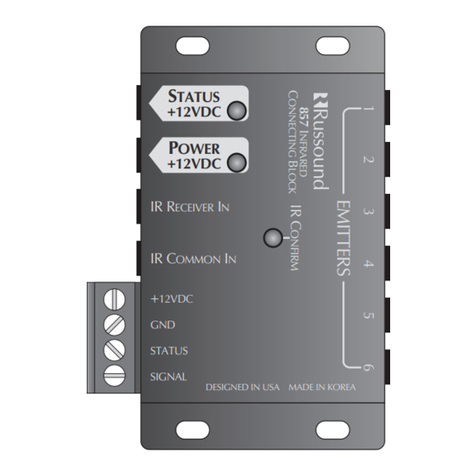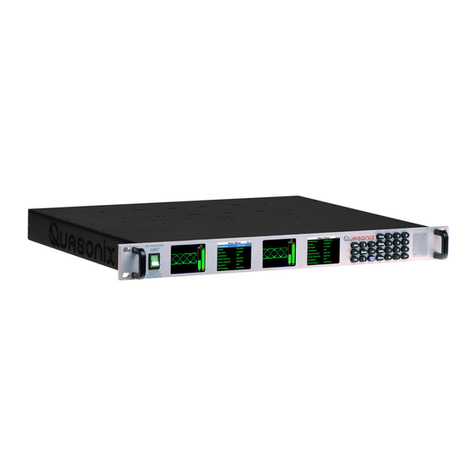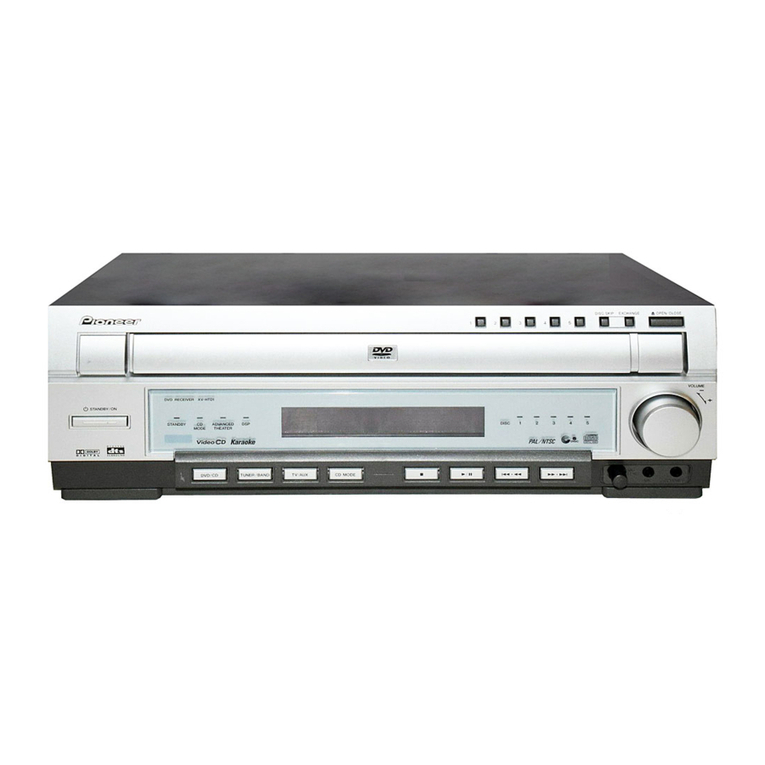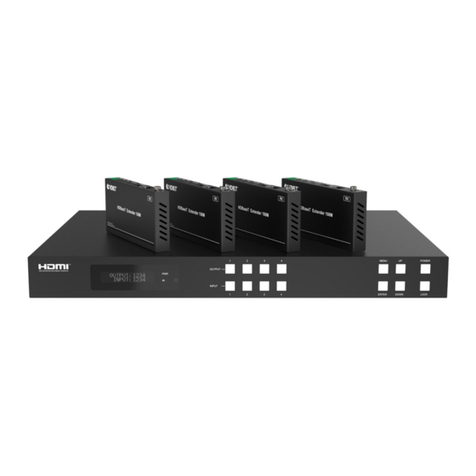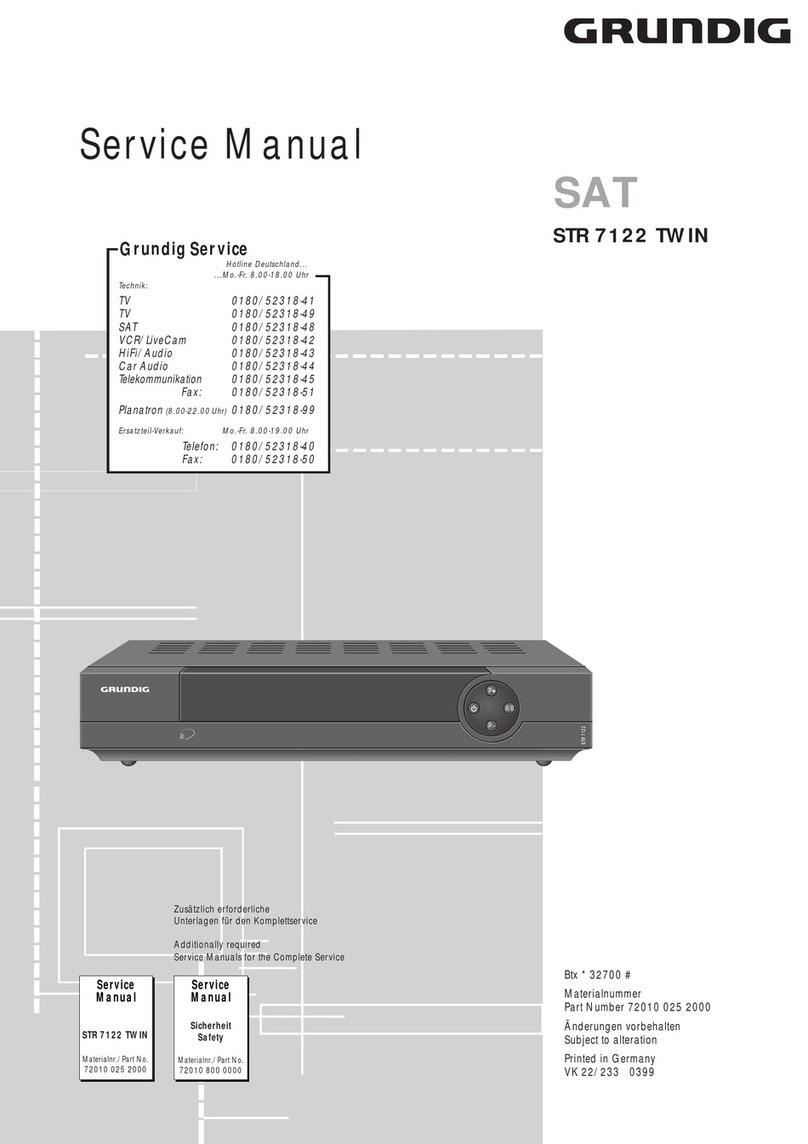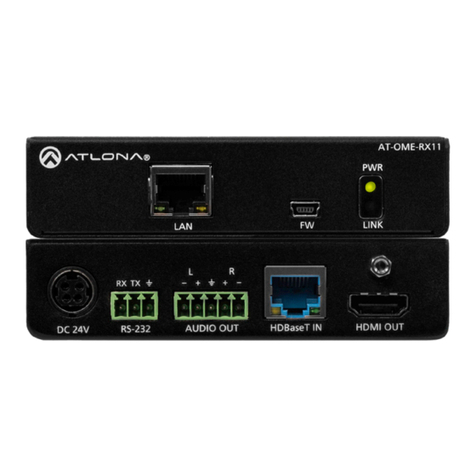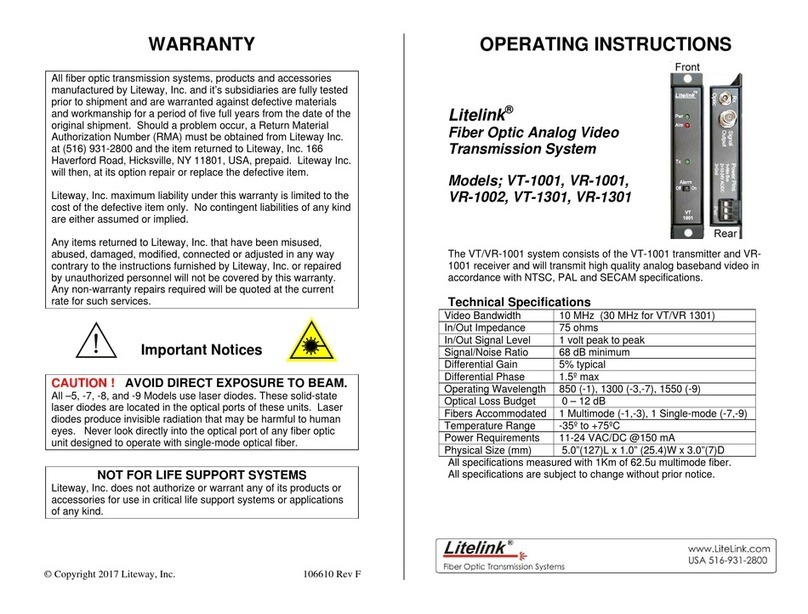
3
1.0 INSTRUCTION
1.1 Safety Instructions
DO NOT INSTALL YOUR RECEIVER:
n In a closed or poorly ventilated cabinet; directly on top of or under any other
equipment; on a surface which might obstruct the ventilation slots.
DO NOT EXPOSE THE RECEIVER OR ITS ACCESSORIES:
n To direct sunlight or any other equipment that generates heat; to rain or intense
moisture; to intense vibration and to any shock which may cause permanent damage
to your receiver or to any magnetic objects, such as loudspeakers, transformers, etc.
n Do not use a damaged power cord. It may cause a re or an electric shock. Do not
touch a power cord with wet hands. It may cause an electric shock.
n When the receiver is not used for a long period of time, you should unplug the power
cord from the wall socket.
n Do not use alcohol or ammonia based liquids to clean the receiver. If you wish, you
may clean your receiver with a soft lint-free cloth slightly made damp with a mild soap
solution, and only after disconnecting from the mains voltage supply. Make sure no
foreign objects fall through the ventilation slots because this could cause re or an
electric shock.
n Do not place any objects on top of the receiver because this might prevent proper
cooling of the components inside.
Safety Precautions
n Never try to open the receiver. It is dangerous to touch the inside of the receiver
due to high voltages and possible electrical hazards. Opening the receiver will void
the warranty of the product. Refer all maintenance or servicing to suitably qualied
personnel.
n When you are connecting cables, be sure that the receiver is disconnected from the
mains supply voltage. Wait a few seconds after switching o the receiver before you
move the receiver or disconnect any equipment.
n It is a necessity that you only use an approved extension and compatible wiring that
is suitable for the electrical power consumption of the installed equipment. Please
ensure that the electrical power supply corresponds with the voltage on the electrical
identication plate at the back of the receiver.
n Risk of explosion if the battery is replaced by an incorrect type.
nDisposing of a battery into the re or a hot oven, or mechanically crushing or cutting a
battery can result in an explosion.
nLeaving a battery in an extremely high temperature surrounding environment can
result in an explosion or the leakage of ammable liquid or gas.
n A battery subjected to extremely low air pressure may result in an explosion or the
leakage of ammable liquid or gas.
